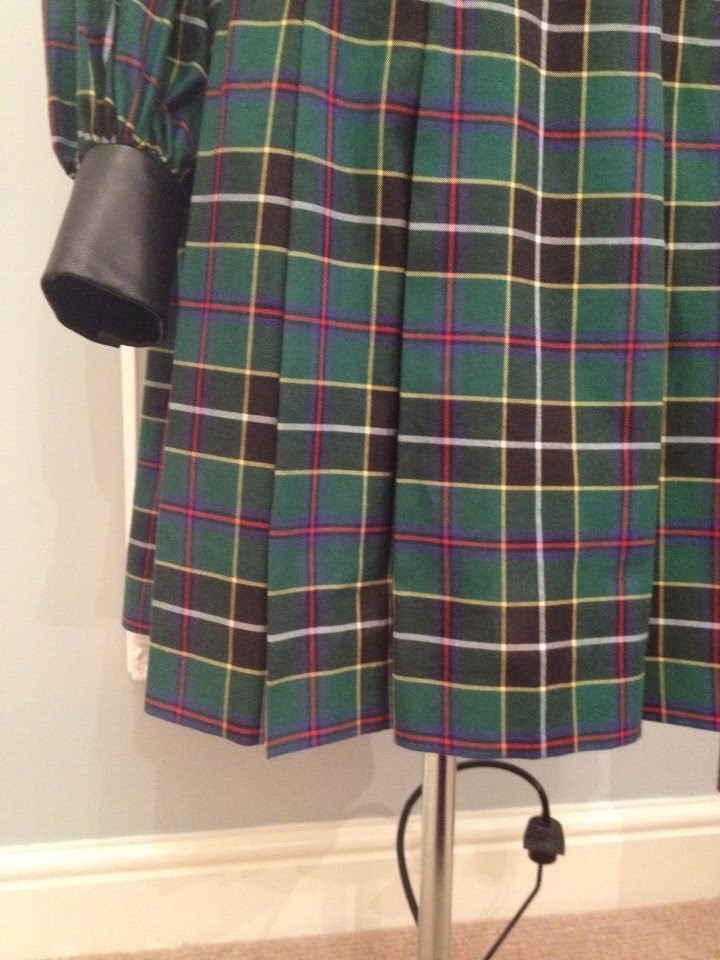Over Easter time, when re-enrolling on my dressmaking course for the Summer term, I decided to look for a soft furnishings class. I haven't been able to find any curtains to go in my redecorated room since it was completed a year ago. I'm not a fan of my blinds so I was pleased to find a weekly soft furnishings and re upholstery course at my local library which is run by Bury Adult Learning.
The tutor got me started straight away on a sample fabric as if it was a curtain. I am making lined curtains so I started on my sample with mitring the corners which are secured using ladder stitch. A blind hem stitch secures the hem and a herringbone stitch secures the side hems.
The next session was all about my material. I had measured my windows (I'm making two pairs of curtains), and added the following allowances to calculate how much fabric to buy:
- Added 15cm to top, bottom and both sides (this will be how much the curtains overlap the windows)
- Added 25cm to the length and doubled the width (the addition to the length is for the seams and the addition to the width is for the curtain gathers).
I opted for a fabric from
Clarke and Clarke's Quantum range called Oberon in Duck Egg (
http://www.clarke-clarke.co.uk/collection.php?hdnCollectionID=47). It is standard width, 138cm and, luckily for me, I only needed two widths to make each pair of curtains. This meant that I had to add the pattern repeat, 14cm, four times for the four cuts I would be making, This brought my total fabric requirement to 11m.
I was really impressed with the customer service from
the-millshop-online (
http://www.the-millshop-online.co.uk/curtain-upholstery-fabric-clarke-clarke-oberon-red-polycotton-1.html) which provided a free sample and dealt efficiently with my stock enquiries. Not to mention the fabric was rolled perfectly on a cardboard tube (so no annoying creases!) and delivered the next day, just in time for class.

The great thing about this fabric is it's geometrical print which makes it easy to cut a straight line following the pattern. I decided that I wanted the bottom of the curtain to end through the centre of each diamond shape (horizontal black line). I therefore cut 20cm below the black line and pressed the seam allowance under by 10 cm then 10cm again. For the side hems I was advised to turn under 4cm and then 4cm again. Luckily this landed perfectly on the vertical black line.
As there was a lot of material it took me some time to accurately press all the seams in place, in the region of an hour per curtain.
Next, after deciding to use lead weights, I made eight fabric pouches on the sewing machine and finished the open seam by hand.
Then it was time to hand stitch the curtain seams:
1. Place two pins where the hem and side hem overlap on each side of the curtain.
2. Unfold the hem and side hem.
3. Fold the fabric through the pins.
4. Place a covered lead weight under the fold of fabric 2.5cm in from the hem and side hem on each side. Secure them in the same way you would secure a button.
5. Re-fold the fabric along the creases previously made. Press.
6. Ladder stitch the mitred corners.
7. Blind hem stitch the hem.
8. Herringbone stitch the side seams.
9. Approximately four hours later this is what you'll end up with:
I'm two down, two to go before I get to the lining and my machine can take over the hard work!
















































.jpg)




